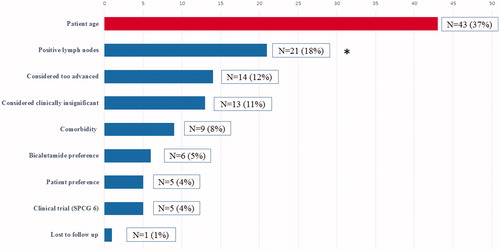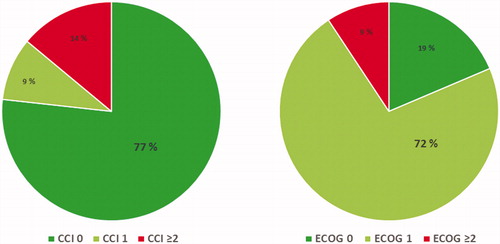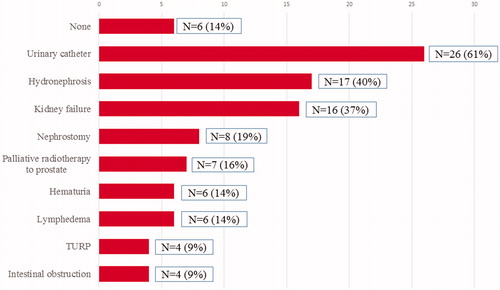Figures & data
Figure 1. Rationales for offering conservative treatment or watchful waiting in non-metastatic patients in the Vestfold Mortality Study (N = 117). *Positive lymph nodes were diagnosed by surgical lymph node staging. According to national treatment protocols, at the time positive lymph nodes were a contraindication for radical treatment.

Figure 2. Charlson Comorbidity Index (CCI, left) and ECOG performance status (right) at diagnosis for patients with non-metastatic prostate cancer who received no local treatment due to age (NoTreat/Age, N = 43).

Table 1. Characteristics of all patients with non-metastatic PC at diagnosis, who later died of PC and who received no local treatment (n = 117).

